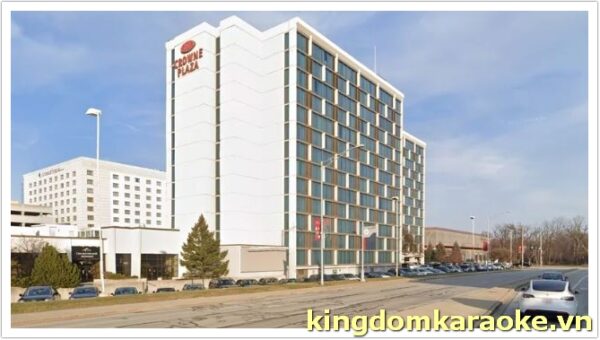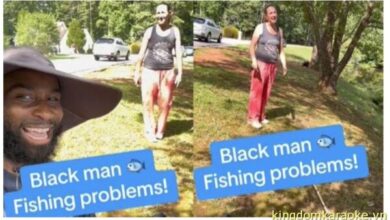The tragic story of Kenneka Jenkins: Girl locked in freezer

Kenneka Jenkins, the tragic young girl locked in a freezer, became a national sensation. This heartbreaking incident attracted public attention when a 19-year-old girl’s life was cut short under confusing circumstances, when she passed away untimely in the coldness of her walk-in freezer. hotel.In this article, we at kingdomkaraoke.vn delve into the details surrounding her case, shedding light on the events that led to her tragic end, the legal battle that followed and the wider implications it has for missing persons issues and justice.
I: The Party and the Disappearance of Kenneka Jenkins
On that fateful night in September 2017, Kenneka Jenkins embarked on a journey that would ultimately lead to her tragic end. She was a vibrant 19-year-old, filled with the spirit of youth and excitement. Kenneka had decided to attend a late-night party on the ninth floor of the Crowne Plaza Chicago-O’Hare hotel, where her life would take a devastating turn.
As the evening unfolded, Kenneka joined the revelry with friends, seeking a night of fun and celebration. Little did she or her loved ones know that this night would forever change their lives. In the midst of the party, amidst the laughter and music, Kenneka mysteriously vanished.
The initial hours of her disappearance were marked by worry and desperation. Kenneka’s mother, Tereasa Martin, began to grow anxious as the family lost contact with her daughter. The clock ticked past 1 a.m., the time when Kenneka had arrived at Room 926 for the party, and she had not returned. By around 2:30 a.m., the sense of alarm had reached a critical point, and Kenneka’s family, along with her friends, began informing hotel staff about her absence.

Hotel surveillance videos would later reveal a troubling sequence of events. Kenneka, in an obviously disoriented state, was captured on camera as she descended the hotel’s hallways. Astonishingly, multiple staff members saw her on her path to an uncertain destination, yet no one intervened or stopped her.
It was during this disorienting journey that Kenneka Jenkins found herself in an unused walk-in freezer located in an under-construction kitchen area of the hotel. This freezer would later become the site of her tragic demise, though she was not discovered until nearly two hours later.
The circumstances surrounding her disappearance and the chain of events leading up to her being locked inside that freezer would leave her family, and the nation, grappling with questions and seeking justice for the girl who became known as the “Girl locked in the freezer.”
II: Negligence of Security Staff Leads to Unpredictable Consequences
As the tragic story of Kenneka Jenkins unfolded, it became painfully evident that the hotel where the party took place had significant weaknesses in event management and ensuring the safety of its guests. The negligence of the security staff and their failure to take appropriate actions would ultimately lead to unpredictable and devastating consequences.
One glaring oversight was the delay in reviewing security camera footage. Despite Kenneka’s family and friends reporting her disappearance to hotel staff as early as 2:30 a.m., there was a concerning lack of urgency in addressing the situation. Security personnel failed to promptly examine the in-house surveillance videos, a critical step that could have potentially led to her swift discovery. This delay in action allowed precious time to slip away, ultimately leading to the tragedy.
Furthermore, the party on the ninth floor had been a source of numerous complaints from other hotel guests. It had become a nuisance, disrupting the peaceful environment that hotel patrons expected. The failure of the hotel staff to intervene in this unruly gathering, despite multiple complaints, only added to the sense of negligence in their duty to maintain order and safety within their premises.
Kenneka Jenkins’ family would later argue that if the hotel had taken proper and timely actions, their daughter might still be alive today. The lack of intervention, combined with the delayed review of surveillance footage, painted a picture of systemic negligence on the part of the hotel and its security staff. This negligence would become a focal point in the legal battle that followed, as Kenneka’s family sought justice and accountability for the untimely death of their beloved daughter.

III: Results of the Investigation
After a thorough investigation into the tragic death of Kenneka Jenkins, the Cook County medical examiner’s office made a determination that her passing was classified as an accident. However, this conclusion did not eliminate the need to understand the contributing factors that led to this unfortunate outcome.
The autopsy report revealed that intoxication from alcohol and the presence of topiramate, a medication used to treat epilepsy and migraine headaches, were significant contributing factors in Kenneka Jenkins’s death. These substances had a role in the sequence of events that ultimately led to her hypothermia and, ultimately, her demise.
Curiously, the autopsy report also noted that the walk-in freezer where Kenneka was found had a mechanism to open the door from the inside. This raised perplexing questions about why she could not escape from the deadly cold. Her family’s legal team would go on to assert that they believed someone outside of the freezer had secured the door, which should have been locked in the first place, without any knowledge of Kenneka’s presence inside. This further complicated the understanding of the circumstances surrounding her death.
While the investigation concluded that Kenneka Jenkins’s death was accidental, the unanswered questions surrounding the handling of the situation and the freezer’s security mechanisms continued to cast a shadow of doubt and led to further scrutiny of the events that transpired on that fateful night. The results of the investigation left room for ongoing discussions and legal actions, as her family and advocates sought to hold those responsible accountable for the events leading up to her tragic demise.
IV: Impacts and Lessons
The tragic case of Kenneka Jenkins, the young girl locked in a freezer, had far-reaching impacts that extended beyond the confines of her untimely death. These impacts encompassed legal resolutions, broader societal issues, and lessons to be learned.
One significant outcome was the compensation agreement reached by Kenneka Jenkins’s family. In the aftermath of the legal battle against the hotel and its security provider, a settlement was reportedly reached, amounting to more than $6 million. Kenneka’s mother, Tereasa Martin, would receive a substantial share of this compensation, with two other relatives each receiving more than $1 million. This settlement, though it could never truly replace the loss of a loved one, provided a form of financial relief and closure for the grieving family.
Beyond the financial aspect, Kenneka’s case drew substantial attention to a broader issue: the disproportionate rate at which people of color, particularly young Black girls and women, go missing in the United States each year. The circumstances surrounding her disappearance and death resonated deeply with many who saw it as a reflection of a systemic problem. It prompted discussions on the media’s focus, law enforcement resources, and societal attitudes toward missing persons of color, shedding light on what has been termed “Missing White Woman Syndrome.”
In response to these concerns, some states, such as California, began adopting specialized alert systems aimed at finding missing Black individuals, such as the “Ebony Alert.” These initiatives seek to address the disparity in media attention and resources allocated to cases involving people of color who go missing.
The case of Kenneka Jenkins serves as a poignant reminder of the importance of justice, accountability, and equity in the treatment of missing persons and those who have suffered injustice. While it cannot bring Kenneka back, it has prompted important discussions and actions aimed at preventing similar tragedies and ensuring that all missing individuals receive the attention and resources they deserve, regardless of their race or background.








